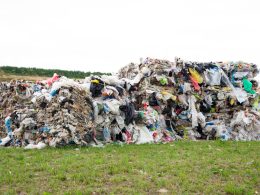Bhutan is exploring plans to finance a proposed US$22.5 billion (RM99.91 billion) expansion of its hydropower generation capacity through a mix of blended finance and green bonds, aiming to revitalise its struggling economy.
The Himalayan nation, located between India and China and home to fewer than 800,000 people, plans to add 15 gigawatts of hydropower capacity by 2040, according to Ujjwal Deep Dahal, CEO of Druk Holding and Investments Ltd, Bhutan’s sovereign wealth fund. This fund oversees the country’s sole power generation utility. Currently, Bhutan has a hydropower capacity of 2.4 gigawatts, with an additional 3.1 gigawatts under construction. The proposed expansion would significantly exceed these existing projects.
Hydropower is Bhutan’s primary source of electricity and a key driver of export revenues, primarily through energy sales to India. However, the nation has yet to fully harness its estimated 33-gigawatt hydropower potential. The planned hydro expansion is part of Bhutan’s broader strategy to attract foreign investment, tackle unemployment, and stimulate economic growth. This vision includes a proposed 1,000-square-kilometer technology and finance hub to attract data centres and boost job creation.
To finance this ambitious plan, Bhutan is considering new financial instruments. “Until now, we have relied on simplistic financing through loans and grants,” Dahal said, emphasising the need for innovative approaches such as blended finance—a model that combines public sector support with private investment. The government is working with the World Bank to develop expertise in structuring such deals and is also evaluating the issuance of green bonds, though market infrastructure for trading these instruments needs to be established.
Bhutan has traditionally relied on concessional loans and grants from allies like India but has recently seen increased interest from private investors, including the Adani Group, Reliance Group, and the Opec Fund for International Development. These entities are exploring clean energy development opportunities in the country.
Despite Bhutan’s ambitions, past hydropower projects have faced delays. Turning to private investors may present challenges, including less favorable debt terms compared to financing from the Indian government, warned Kalyani Honrao, an Asia analyst at the Economist Intelligence Unit.
Bhutan is also considering using blended finance and green bonds for developing five gigawatts of solar power capacity, Dahal said. “We are still at the planning stage,” he added, emphasising that Bhutan’s hydropower expansion is a critical element of its path toward economic rejuvenation.





















